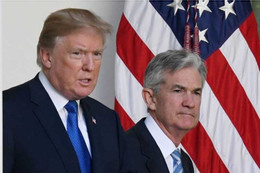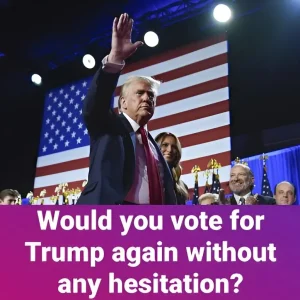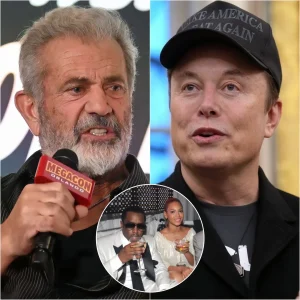Will this pressure change Fed policy and what will the US economy look like in 2025?
In recent days, US President Donald Trump has repeatedly criticized Federal Reserve Chairman Jerome Powell, accusing the head of the world’s most powerful financial institution of reacting too slowly in cutting interest rates to support the world’s number one economy.
Early morning of April 19 (Vietnam time), Mr. Trump continued to criticize Mr. Powell, in the context of escalating tensions between the President and the head of the Fed.
In an interview with the press, according to CNBC , Mr. Trump stated: “If we had a Fed chairman who understood what he was doing, interest rates would have been lowered. He should have lowered interest rates.”
Mr Trump has long argued that the Fed – which sets US monetary policy – needs to cut interest rates more aggressively to boost economic growth.
White House economic adviser Kevin Hassett said on April 18 that the president and his team are considering the possibility of removing the Fed chairman. However, Mr. Powell previously affirmed that he cannot be fired and will continue to hold this position until the end of his term (May 2026).
“The president and his team will continue to study that,” Mr. Hassett said when asked whether firing Mr. Powell might be “an unprecedented option.”
On April 17, on the social network Truth Social, Mr. Trump called Chairman Jerome Powell by the nickname “Too Late” and called for his immediate dismissal.

The former president said the Fed should act more aggressively in cutting interest rates, similar to what the European Central Bank (ECB) has done. Previously, the ECB reduced interest rates by 0.25 percentage points, to 2.25%. This is the seventh time the ECB has cut interest rates in the 10 months since the start of the monetary easing cycle.
Mr. Trump believes that low interest rates will help reduce the impact of tariffs, especially in the context of increasing trade tensions between the US and China and partners such as Mexico and Canada.
According to The Wall Street Journal , Mr. Trump has privately discussed the possibility of firing the head of the Fed many times, but has not yet made a final decision. The source also revealed that Mr. Trump mentioned this issue in closed-door meetings at the Mar-a-Lago resort with former Fed Governor Kevin Warsh.
During his first term (2017-2021), Mr. Donald Trump also frequently criticized Fed Chairman Jerome Powell – whom he appointed in 2018.
He even called Mr. Powell an “enemy of America” when the Fed did not lower interest rates quickly enough as expected, especially in the 2018-2019 period, when the trade war with China caused continuous fluctuations in the financial market.
Still, Mr. Trump has not followed through on his threat to fire the Fed chairman, in part because the agency finally cut interest rates in 2019.
However, in his return to politics this time, with a more aggressive tariff policy, Mr. Trump seems to be showing a tougher stance in pressuring the Fed to adjust monetary policy to serve his economic plan.
Trump’s Pressure and the US Economic Outlook
Mr. Jerome Powell has maintained his stance on the independence of the Fed, affirming that he will not resign even if asked by President Trump and emphasizing that the law does not allow the president to fire the Fed chairman just because of disagreements on monetary policy.
In a speech at the Economic Club of Chicago on April 16, Mr. Jerome Powell warned that the tariffs proposed by Mr. Trump, such as a 145% tax on Chinese goods or 25% on aluminum and steel from Mexico and Canada, could push up inflation and slow economic growth.
He stressed that the Fed needs more clear data before adjusting interest rates, instead of making decisions under political pressure.
In the US media, many experts commented that pressure from Mr. Trump is unlikely to cause Chairman Powell to change his stance immediately.
The Fed’s independence is seen as a key foundation for confidence in global financial markets. If Mr Powell were fired, it could trigger a serious crisis of confidence and even a stock market crash, Senator Elizabeth Warren has warned.
However, if re-elected and given the right to appoint a successor in 2026, Mr. Trump could indirectly influence the direction of monetary policy in the long term.
The Fed now faces a dilemma: balancing its goal of controlling inflation and promoting economic growth. Mr. Trump’s aggressive tariff policies could push the consumer price index above its 2% target, while increasing the risk of recession. The Atlanta Fed forecasts that GDP could fall 0.1% in the first quarter of 2025.
According to CME Group’s FedWatch tool, the market expects the Fed to cut interest rates by 25 basis points at its June meeting and conduct a total of three cuts in 2025.
It can be seen that the US economy is facing many risks due to widespread tariffs. Many warnings of recession have been issued if the trade war continues.
The trade confrontation with China – with current tariffs of 145% and the possibility of rising to 245% – and retaliatory measures from Beijing, is disrupting global supply chains.
There are bright spots in the U.S. economic picture, however. March retail sales rose sharply by 1.4%, driven largely by the auto sector, suggesting consumers are still spending heavily, possibly due to concerns about looming tariffs.
However, if inflation persists and the Fed fails to ease policy in time, growth could stall, especially if trading partners respond with similar tariffs.

Jerome Powell doesn’t know what will happen under Trump, Fed stops cutting interest rates Fed Chairman Jerome Powell doesn’t know what will happen to tax, immigration and fiscal policies under Donald Trump. This is the factor that makes the US central bank stop cutting interest rates to wait and see.






